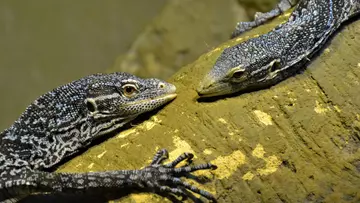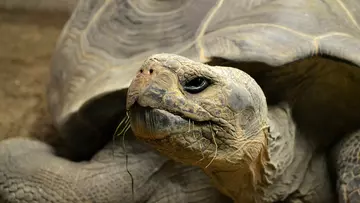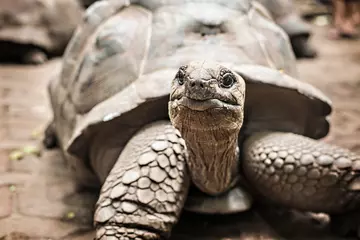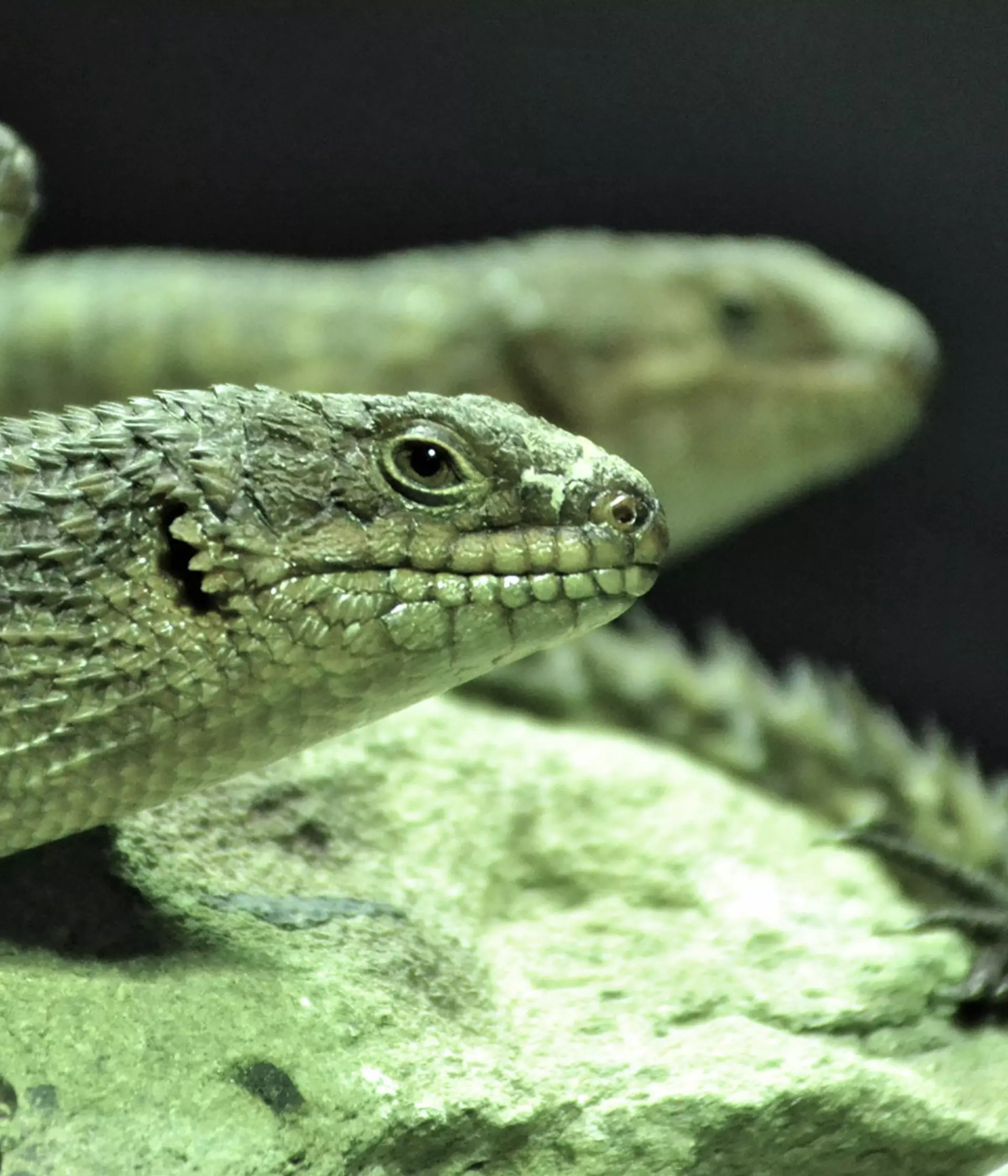
ZSL
Zoological Society of London
London Zoo’s Dr Chris Michaels discusses ZSL’s ground-breaking research into reptile welfare and reveals how the world’s oldest scientific zoo is challenging the stereotypes associated with these sophisticated animals
Reptiles have a problematic reputation. To quote Sir David Attenborough, “Reptiles […] are sometimes thought of as primitive, dull and dim-witted. In fact, of course, they can be lethally fast, spectacularly beautiful, surprisingly affectionate and very sophisticated”. Although this is thankfully now becoming more widely recognised, our understanding of reptile behaviour and needs is woefully behind that of other animals such as mammals and birds.
London Zoo was the world’s first scientific zoo, and we maintain a scientific approach to animal welfare to this day, using research to continually enhance how we look after the 18,000 animals in our care – many of which are threatened in the wild and part of important global breeding programmes.
In the zoo’s Reptile House we fastidiously record animal behaviour - documenting everything from snake feeding patterns, to daily lizard routines - in order to identify new animal needs, drive the scientific field forward and provide practical guidance that we can share with other zoos globally.
What can we learn from observing tree monitor lizards?
For example, the team recently observed tree monitor lizards engaging in what seemed like a pointless behaviour; repeatedly tearing off leaves from plants and taking the pieces back to their perches to methodically shred them. Sometimes they would even drop the leaves from a height before retrieving them. These carnivorous lizards don’t eat leaves, so what was going on? Working with colleagues from Bristol Zoo, who had independently noticed the behaviour in their monitors, we made further observations of the behaviour and when we compared these against established scientific literature, we made a surprising discovery: the lizards were almost certainly playing.
Play is usually most strongly associated with mammals, so the idea of a reptile playing might seem a little strange, but the leaf shredding we observed fits with other research into reptiles at play; turtles have been documented playing with balls, crocodiles with hoses and Komodo dragons with buckets and shoes.
Our observations in tree monitors suggests that play is probably more widespread in reptiles than was thought and shows how important it is to avoid historical stereotypes - leading us to investigate what further opportunities zookeepers can create for reptiles to play.
Often thought of as solitary animals, it is also becoming increasingly clear that reptiles can form complex social relationships. Australian gidgee skinks for example, take this to the extreme and live in extended family groups. We worked with Holly Baines, a student on the Wild Animal Biology (WAB) Masters course hosted by ZSL and the Royal Veterinary College, to better understand how these group dynamics work. After analysing hours of video footage of the zoo’s skink family, Holly found that family groups form stable dominance hierarchies based on size and maintained through aggression, which increased based on the food resources available.
All of this information is incredibly useful: we are now sensitive to the fact that dominance hierarchies exist in these social lizards and thus can ensure that when groups need to form new breeding colonies, the right individuals can be homed together.

Enrichment for reptiles
You might hear zookeepers talking about ‘enrichment’, which is the term for any activity or object given to stimulate natural behaviours and cognition in animals. This could involve burying food for animals that are known diggers, scattering food for those that forage, or laying scent trails for those that hunt by scent. With another WAB student (Inez Janusczak), we investigated the impact of different feeding enrichment on the welfare of tree-runner lizards in the zoo.
Inez compared feeding times using an enrichment device, which slowly delivered insects over time, with scatter feeds, where insects are hand scattered in the enclosure for the lizard to hunt. We were surprised to discover that the relatively simple scattered feed outperformed the fancy device in stimulating natural behaviours, promoting activity, and encouraging use of the whole enclosure. This was almost certainly because the scattered feed effectively turned the whole enclosure into an enriching hunting game, with insects emerging slowly from a multitude of hiding places over time.
With reptiles living long lives of several decades or more, and as we learn more about their needs, there will inevitably be times when those who care for these lesser-studied species need to recognise historical shortcomings and put things right. Vital research taking place at ZSL does - and will continue to - contribute to this.
What can we learn from tortoises?
Keepers noticed that our three adult female giant tortoises - whom visitors know as Dolly, Polly and Priscilla - were becoming aggressive with each other, especially when they had interacted a lot with people, for example, with our vet team during health checks. We worked with WAB Masters student Laura Freeland to investigate this problem and find an evidence-based solution. Laura recorded hundreds of hours of footage of the tortoises and kept a log of human interactions in order to correlate this with this new behaviour between the animals.

Before she could do this, however, Laura had to describe the ritualised combat behaviour between tortoises and establish the social structure of the group. It turns out that the tortoises follow relatively rigid behavioural steps in a confrontation, beginning with posturing and threatening. We postulate that, like red deer and stag beetles, this allows tortoises to resolve many natural disputes without actually fighting.
We also found an interesting hierarchy in the group, based on height. The tallest tortoise was consistently the most dominant, while the other two were of similar height and contesting second and third places. This explained some of the recently elevated aggression, as the shorter tortoises couldn’t decide their positions relative to one another. We also discovered that the role human interaction played was two-fold. Firstly, interaction increased activity levels in the tortoises, which in turn increased the number of times the animals encountered one another. Secondly, during interactions - such as those occurring during vet check ups - people were touching the tortoises.
This naturally evokes a curious involuntary trance-like behaviour famously called the ‘finch response’, which originated in the wild as a way of allowing finch birds to groom tortoises for ectoparasites - a brilliant example of mutualism.

The tortoises were inadvertently being ‘finched’ before giving the behavioural cue that they wanted it to happen, and they were unimpressed with the removal of this choice to participate, leading to aggressive behaviour. As soon as we had this information we were able to make immediate changes to how we cared for the tortoises, ensuring that they are not finched until they have chosen to be. The tortoises quickly became less aggressive to one another and Dolly, Polly and Priscilla are now back to their usual charismatic selves
Reptile behaviour and welfare is an enormous subject, and the work we have done so far only scratches the surface of this complex and largely understudied area of zoology. However, by continuously working to document, assess and evolve the way we care for reptiles, we can slowly start to fill the gaps in global knowledge and challenge the stereotypes associated with these incredible animals - ensuring that we can give them the best care possible.
Further reading
Baines, H., Gini, B., Chang, Y., & Michaels, CJ. 2020. Dominance and aggression in captive gidgee skinks (Egernia stokesii). The Herpetological Journal 30: 83-92. https://www.thebhs.org/publications/the-herpetological-journal/volume-30-number-2-april-2020-1/2037-03-dominance-and-aggression-in-captive-gidgee-skinks-i-egernia-stokesii-i
